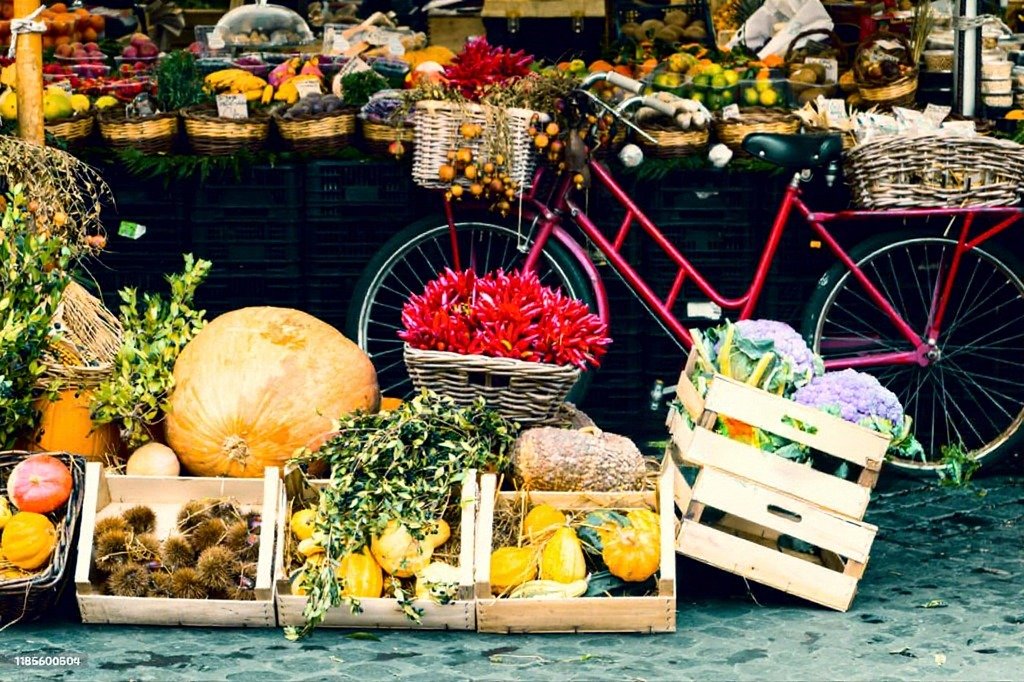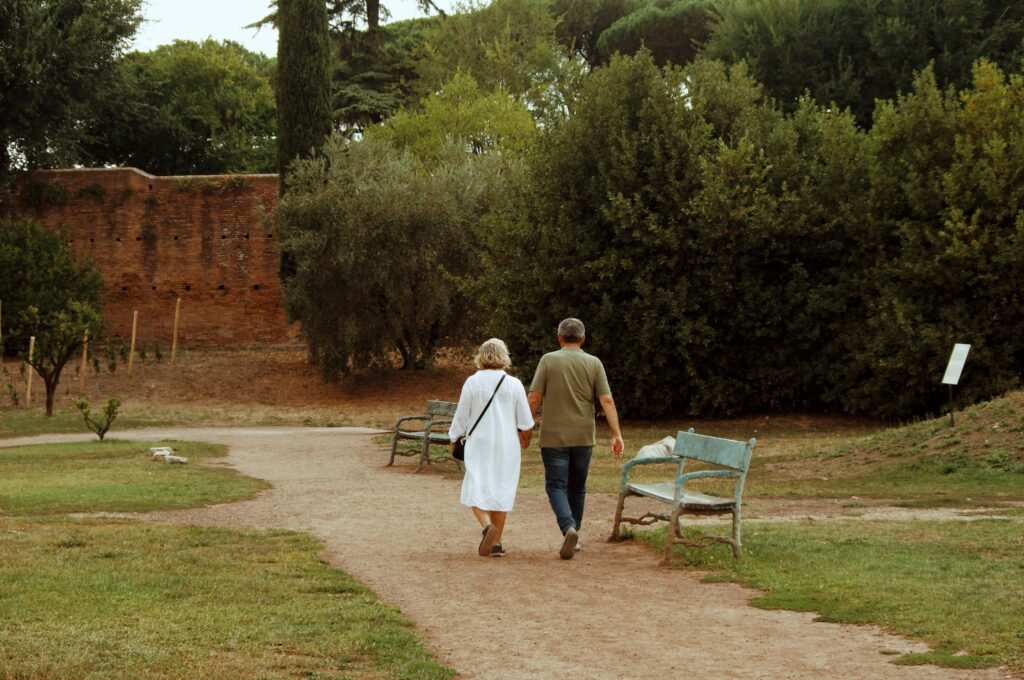Testaccio Market Rome is one of the city’s best-kept secrets—a true hidden gem for anyone craving authentic Roman flavors and the lively atmosphere of a local neighborhood. Tucked away in Testaccio, a district rich in history, the market brings together traditional food stalls and modern street vendors, creating a vibrant space where Rome’s culinary past and present meet.
As you wander through the aisles, sunlight pours in through the glass roof, illuminating rows of fresh pasta, artisanal cheeses, colorful produce, and sizzling panini. More than just a food stop, this market tells a story. In this guide, you’ll discover Testaccio’s history, its must-try foods, practical visiting tips, and the charm of the neighborhood that surrounds it.
Whether you’re a passionate foodie, a curious traveler, or even a local exploring your own city, the Testaccio food market Rome, Italy, offers one of the most genuine tastes of Roman culture.
What is Testaccio Market Rome (Mercato di Testaccio)?
If you’ve wandered through Rome, you might have noticed that some areas are tourist hotspots, while others retain a distinctly local charm. Testaccio is firmly in the latter category, offering an authentic Roman experience away from the crowds.
History: From Old Slaughterhouse to Modern Market
The story of Mercato di Testaccio begins in the early 20th century, when it served working-class families living near the neighborhood’s old slaughterhouse. Known simply as Il Mercato di Testaccio, it was the go-to place for fresh meat, vegetables, and daily essentials.
Decades later, in 2012, the market moved into its new home—a modern glass-roofed building just a few streets away. This “Nuovo Mercato Testaccio” kept the original community spirit alive while also welcoming a younger, cosmopolitan crowd.
Neighborhood: Where is Testaccio in Rome?
Where is the Testaccio neighborhood in Rome? Testaccio sits just south of Aventine Hill and west of the Tiber River. Despite its central location, the area feels worlds apart from Rome’s more crowded districts. Here, locals shop for groceries, students grab quick lunches between classes, and nonnas carefully select produce for family dinners.
Is Testaccio a Safe Neighborhood?
Yes—Testaccio is known as one of the friendliest and most welcoming neighborhoods in Rome. The streets have a strong sense of community, where vendors greet regulars by name and neighbors stop to chat in cafés. Visitors can stroll the market and nearby streets without worry, especially during the day and early evening. It’s a calm, authentic area that lets you experience Rome at its most genuine.
The Atmosphere of Testaccio Market, Rome
Walking into the Testaccio Rome market feels like stepping into the neighborhood’s heartbeat. It’s not just about food—it’s about rhythm, energy, and culture.

- Visuals: Sunlight streams through the glass roof, casting a warm glow over colorful fruits, vegetables, cheeses, and street-food stalls.
- Sounds: Vendors chatting with customers, pans sizzling, and the hum of everyday conversation create a lively soundtrack.
- Scents: The aroma of freshly baked bread, roasted coffee, cured meats, and fresh herbs fills the air, pulling you deeper into the experience.
- People: From grandmothers choosing vegetables to students grabbing a quick panino, the human flow gives the market its charm.
Every step draws you further into local life, making Mercato di Testaccio Rome, Italy, one of the city’s most vibrant cultural hubs.
What to Do Around Testaccio?
Visiting Testaccio Market Rome is just the beginning of what this neighborhood has to offer. Step outside the market, and you’ll find yourself in a district where food, history, and culture blend seamlessly. Beyond browsing stalls, here’s how to experience the heart of Testaccio:
- Savor Traditional Roman Cuisine: After browsing the stalls, head to a nearby trattoria or osteria for classics like cacio e pepe, supplì, or carbonara, often made with recipes passed down for generations.
- Discover Monte Testaccio: Just a short walk away, this ancient mound built from discarded amphorae reveals the neighborhood’s deep connection to Rome’s trading past.
- Experience Local Art: Testaccio’s streets double as open-air galleries, with vibrant murals and small studios reflecting the district’s creative soul.
- Enjoy Riverside Walks: The nearby Tiber River offers scenic paths perfect for a stroll, whether you’re chasing golden sunsets or watching locals go about their day.
- Absorb Neighborhood Vibes: Pause in piazzas or cafés to soak up Testaccio’s everyday rhythm—nonni chatting over coffee, students grabbing quick bites, and neighbors greeting each other warmly.
What to Eat at Testaccio Market Rome
Food at Mercato di Testaccio market is not just about filling your stomach—it’s about tasting the very soul of the neighborhood. Every stall has its own story, some rooted in Roman tradition, others putting a modern twist on classic flavors. Here’s how to explore it step by step.
1. Must-Try Food
Start with the Roman staples that give Testaccio its reputation:
- Supplì: Golden, crispy rice croquettes with a molten mozzarella core—Rome’s comfort food in one bite.
- Porchetta: Slow-roasted pork, fragrant with herbs, carved into generous slices for sandwiches or plates.
- Pizza al taglio: At Casa Manco, expect inventive toppings like zucchini blossoms, ‘nduja, or seasonal vegetables layered over airy, crisp-edged slices.
- Trapizzino: A modern Roman invention—triangular bread pockets filled with hearty dishes like oxtail stew or chicken cacciatore.
- Dolci & Coffee: No Roman food journey ends without espresso, paired with biscotti or pastries fresh from bakery stalls.
2. Best Food Stalls in Testaccio Market You Can’t Miss
Some stalls have become legends in their own right:

- Mordi e Vai: Run by Sergio Esposito, a former butcher, this stall is famous for panini stuffed with Roman classics, such as trippa alla Romana or picchiapò. Locals queue daily for these soulful bites.
- Casa Manco: Elevates pizza al taglio into an art form, offering bold combinations that balance tradition with creativity.
- Trapizzino: Perfect for adventurous eaters who want Rome’s past reimagined as handheld street food.
- Spiros Bistrot: A multicultural favorite, serving Mediterranean staples like moussaka and couscous alongside Roman comfort dishes.
3. What’s the Best Thing to Buy in Rome?
Don’t leave empty-handed—Testaccio is the perfect place to pick up edible souvenirs:
- Vacuum-packed salumi and pecorino romano, travel-ready and packed with flavor.
- Artisanal dried pasta, sauces, and olive oil are authentic pantry staples from Rome.
- Olives, honey, and preserves, small but memorable tokens of Italian kitchens.
- Organic bread and pastries are ideal for a picnic or train ride snack.
- Local wines and liqueurs are excellent for gifts or to recreate your Roman evenings at home.
What is the Best Shopping Street in Rome for Clothes?
The best shopping street in Rome for clothes is Via del Corso, a lively boulevard lined with international brands, trendy boutiques, and Italian fashion staples. For luxury shopping, nearby Via Condotti is home to iconic designers like Gucci and Prada. Together, these streets offer the perfect mix of affordable fashion and high-end style in the heart of Rome.
How to Order Food in Testaccio Market Like a Local
Ordering food at Testaccio Market Rome is as much about the experience as it is about the flavors. To blend in with the locals, start simple: greet vendors with a warm “buongiorno” and a smile. A friendly approach goes a long way in this working-class neighborhood, where relationships matter as much as the food itself.
While many stall owners understand a bit of English, most truly appreciate it when visitors make an effort in Italian. A few key phrases can open doors to better service and sometimes even insider recommendations:
- Vorrei… – “I’d like…”
- Posso avere… – “Can I have…”
- Per favore – “Please”
- Grazie / Grazie mille – “Thank you / Thank you very much”
- Mi consiglia qualcosa? – “Do you recommend something?”
- Quanto costa? – “How much does it cost?”
- È possibile assaggiare? – “Is it possible to taste?”
Don’t hesitate to ask what’s fresh or special that day—many stalls rotate their menus daily, and locals often let the vendor guide their choice. Sampling is part of the culture, especially with cheese, olives, or bread, so keep a little patience (and small change) ready.
What is the Best Time to Visit Testaccio Market?
The best time to visit Testaccio Market Rome depends on the kind of experience you’re looking for. If your goal is to shop like a local, weekday mornings are ideal.
Arriving between 9:00 AM and 11:00 AM means you’ll catch the market at its freshest, with produce, bread, and cheeses just being set out. It’s also the best moment to chat with vendors before the midday rush begins.
For foodies, late morning to lunchtime (around 12:00 PM – 2:00 PM) is when the market comes alive with street food stalls serving pizza al taglio, panini, trapizzini, and Roman classics.
Officially, the Mercato di Testaccio hours (orari) are:
- Monday to Saturday: 8:00 AM – 3:30 PM
- Closed on Sundays
That means afternoons are quieter, with some vendors starting to pack up after 2:00 PM. If you arrive too late, you risk missing the best selection of food and fresh products.
How to Get to Testaccio Market Rome
Reaching the market in Testaccio, Rome (Mercato di Testaccio), is straightforward, whether you’re staying in the city center or exploring from another neighborhood. The market sits in the heart of Testaccio, just south of Aventine Hill and close to the Tiber River.

- By Metro: The nearest stop is Piramide (Line B), about a 10-minute walk from the market. From there, follow the signs toward Testaccio and you’ll find the glass-roofed building of the market on Via Galvani.
- By Bus or Tram: Several bus lines connect the area to Trastevere, Termini Station, and central Rome. Popular routes include buses 170, 781, and 83. Tram line 3 also stops nearby.
- By Foot or Bike: If you’re staying in Trastevere or Aventine, the walk to Mercato Testaccio takes about 20 minutes, offering a scenic route past local cafés and piazzas. Cycling is another great option, as Testaccio is well-connected by bike paths along the Tiber.
- By Taxi or Ride-Share: Taxis and ride-hailing services are widely available in Rome. Simply request a drop-off at Mercato di Testaccio on Via Galvani, and you’ll arrive directly at the entrance.
Final Thoughts
So, is Testaccio Market worth visiting? Absolutely. It’s a place where history, tradition, and modern food culture meet. The market isn’t just about eating—it’s about living Rome the way locals do.
Skip the tourist crowds at Campo de’ Fiori and make time for Testaccio. Between the flavors, the atmosphere, and the stories hidden in every stall, it’s an experience you’ll remember long after you leave.
Frequently Asked Questions
What not to do in Rome as a tourist?
When visiting Rome, it’s important to avoid common tourist mistakes. Don’t litter or jump queues, as both are frowned upon by locals. Also, skip dining right next to major landmarks, since restaurants there often charge inflated prices for mediocre meals. Most importantly, never touch or climb historic monuments. By respecting these customs, you’ll enjoy a smoother and more authentic Roman experience.
What is the most famous market in Rome?
Rome boasts several iconic markets, each with its own charm. Campo de’ Fiori is perhaps the most famous, known for fresh produce and colorful flowers. For authentic Roman cuisine, Testaccio Market is the go-to spot. Porta Portese offers vintage treasures, Mercato Trionfale is ideal for groceries, and Mercato Monti shines with artisanal crafts. Together, these markets highlight Rome’s vibrant shopping culture.
What are the no-go areas in Rome?
Although Rome is generally safe, it’s wise to remain cautious in certain areas. At night, avoid parts of Tiburtina, the surroundings of Termini Station, and some city outskirts where petty crime can occur. Even in busy districts, pickpocketing is common, so staying alert in crowded places ensures a safer trip.
What is the prettiest neighborhood in Rome?
Trastevere is often considered the prettiest neighborhood in Rome. With its cobblestone streets, ivy-covered buildings, and lively piazzas, it blends old-world charm with modern energy. By day, it’s perfect for wandering and photography, while by night, its trattorias and bars create a warm, vibrant atmosphere.
Is Testaccio worth visiting?
Absolutely—Testaccio is one of Rome’s hidden gems. Unlike more tourist-heavy areas, it offers an authentic slice of local life. From bustling food stalls and fresh Roman dishes to artisanal goods and cultural landmarks, Testaccio delivers an immersive experience that feels both genuine and unforgettable.




